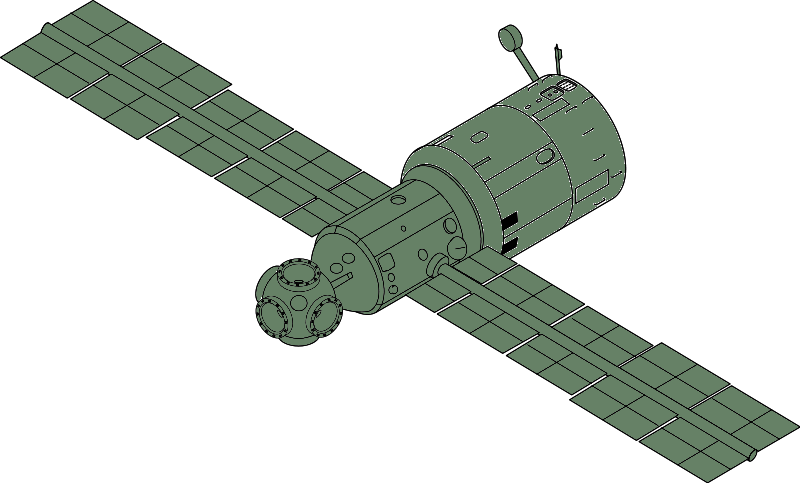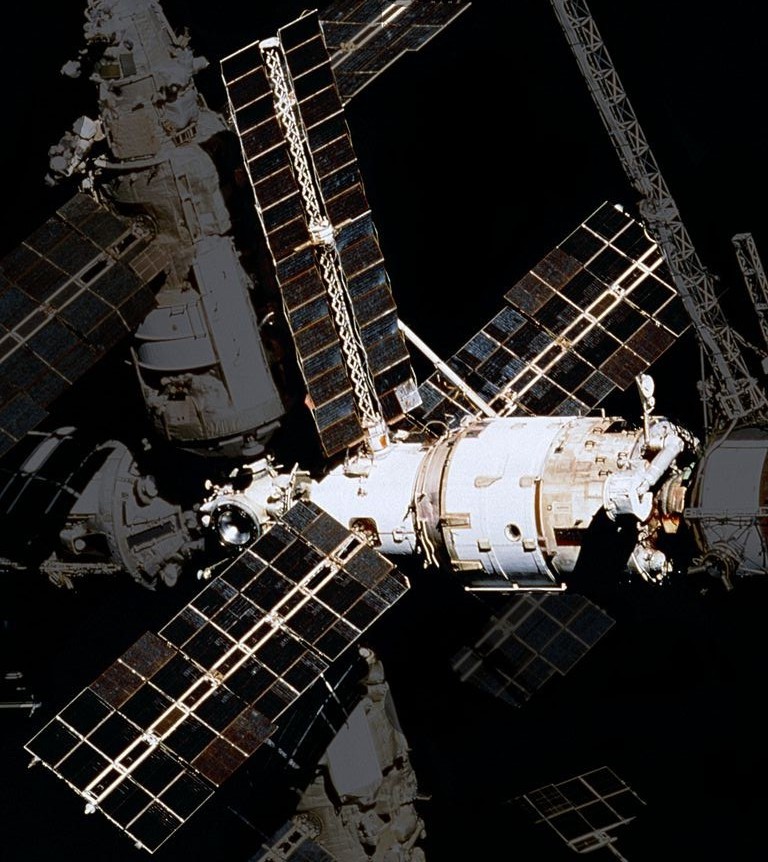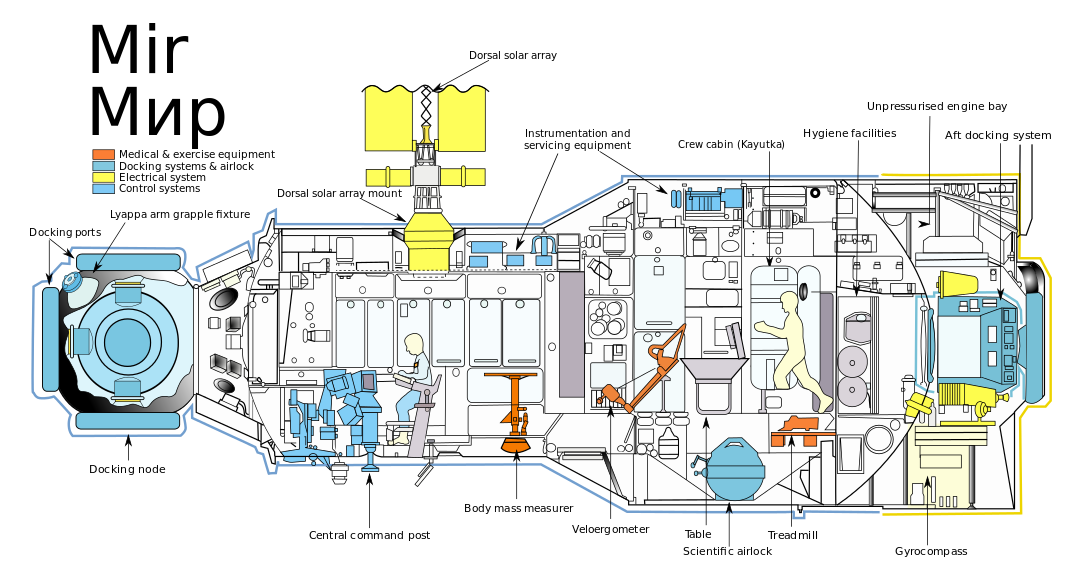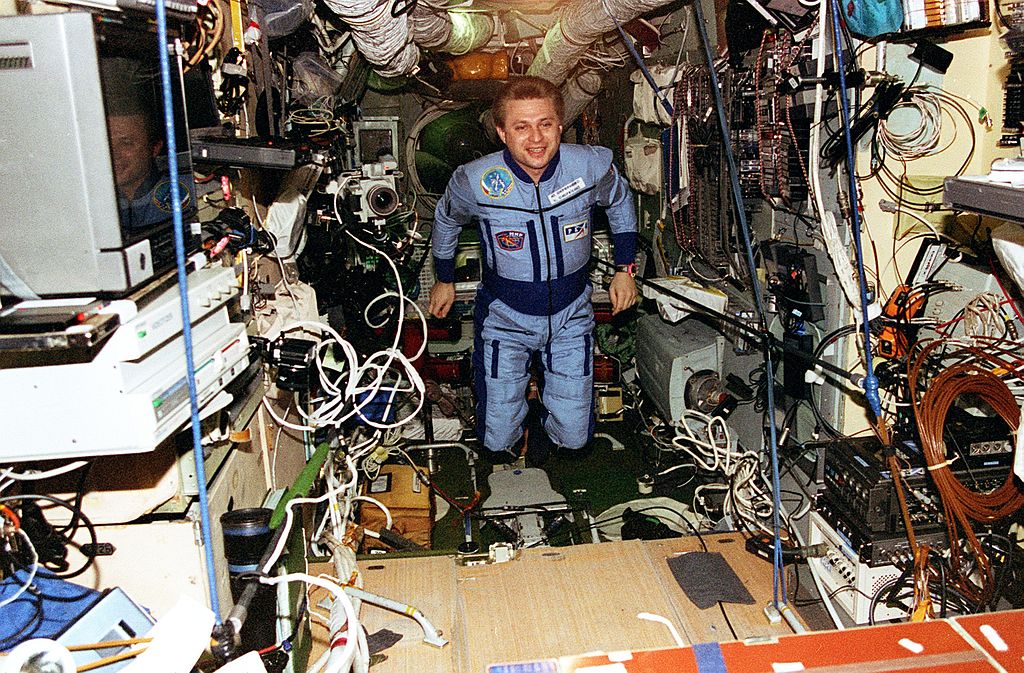
The Core Module is connected to Kvant-1 (Astrophysics), Kvant-2 (Augmentation), Kristall (Technology), Spektr (Power) and Priroda (Earth Sensing).


The Core Module is connected to Kvant-1 (Astrophysics), Kvant-2 (Augmentation), Kristall (Technology), Spektr (Power) and Priroda (Earth Sensing).

The Core Module (DOS-7) was the first module of the Soviet/Russian Mir space station complex, in low Earth orbit from 1986 to 2001. Also referred to as base block, the module was launched on 20 February 1986 on a Proton-K rocket from Baikonur Cosmodrome.

The Core Module was generally similar in design to the two previous Soviet orbital stations, Salyut 6 and 7. It differed with the addition of a multiple docking node at its forward end.
In addition to the docking port at its rear, extra docking ports in the node allowed five additional modules Kvant-1 (1987), Kvant-2 (1989), Kristall (1990), Spektr (1995) and Priroda (1996) to be docked directly to it. This greatly expanded the station's capabilities.
Designed as a 'habitat' or 'living' module, the Core Module possessed less scientific apparatus than its predecessors and provided crews with a comfortable living area.
Other changes from Salyut 6 and 7 included larger solar arrays, a new power system, greater automation and a new docking system, Kurs. This was in addition to the older Igla system.

The Core Module also featured a small trash/science airlock, an aluminium hull and several portholes with hatches for viewing out.
The main purpose of the Core Module throughout the station's lifetime was a living area. It was equipped with a lavatory, two cabins for sleeping and privacy, entertainment including movies and music, exercise equipment, and medical equipment.
It also included a command center with televisions screens for communication with TsUP (the Earth command center for the station).
A third solar panel was was delivered with Kvant-1 to increase solar panel area of the Core Module to 98m2.

The module was launched unmanned into Low Earth Orbit. The first crew of two (designated expedition EO-1) was launched aboard Soyuz T-15 on 13 March 1986.
After 52 days, they left Mir and visited Salyut 7 for 51 days, then returned to Mir for 21 additional days. They returned to Earth on 16 July 1986.

This is the only occasion in history when a crew transferred between two different space stations.
Between 1986 and 2000, a total of 28 crews inhabited Mir. These crews were rotated on a regular basis.
The expedition crews were supplemented by short stay visiting crews from time to time.
Mir was un-inhabited for only four short periods during its life.
The Core Module also had six docking ports. Four of them, called "berthing" ports, were located radially on the node on the front of the module. These were designed for station expansions. The other two ports were located laterally, one at the node and the other at the aft of the module. These were designed for routine docking of Soyuz and Progress craft.
The Core Module had two engines, located aft, which were designed for orbital maneuvers. These engines could not be used after April, 1987 when the Kvant-1 module was berthed to the Core Modules aft port.
DOS (Dolgovremennaya Orbitalnaya Stanziya or Long Term Orbital Station) type
Length: 13.13 m
Diameter: 4.15 m
Wingspan: 20.73 m (with solar arrays)
Habitable volume: 90 m3
Mass at Launch: 20,400 kg
Major Ports: 6
Power: Up to 9-10 kilowatts at 28.6 volts (GaAs based solar cells)
(Two arrays with 76 m2 (expanded to 98m2 in 1987 with a third array)
Main engines: 2 liquid propellant with 300 kg thrust each (Not used after 1987)
Main computer(s): Argon 16B (1986), Salyut 5B (1989)
Reference: Wikipedia - Core Module